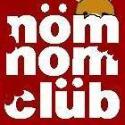Based in Paranaque, Nanette Saenz started cultivating her yogurt initially for home consumption but soon, family and friends began asking her to make some for them and before long, she began offering this to an extended network. When asked what makes her yogurt different from commercial ones, this is her reply:
The milk we use is from New Zealand and/or Australia because if I'm not mistaken, they do not pump their cows with hormones and unnecessary antibiotics, as other milk-producing countries are said to do. Also, we use whole milk, not powdered and reconstituted. We would be hewing more closely to nature if the water component of the milk came from the cows themselves, rather than from our water supply, well-filtered as it might be.
Unsweetened yogurt gives you the most flexibility. Toss in chopped sweet fruit, raisins, nuts & roasted oat meal and you have a delicious breakfast or snack. Those with sugar issues can sweeten it with sugar substitutes. It can be used as a base for salad dressings or as an alternative to sour cream or mayo.
The honey we use is extra virgin dark tropical honey. It contains Vitamin C, catalase (an enzyme we need) & selenium (promotes good cell function). Pinocembrin, a potent antioxidant, is unique in dark honey.
The fruit in our yogurt is canned without harmful preservatives and artificial (or, as some product labels read, "nature-identical" ) flavors. Soon, we will be producing variants with fresh fruit and dried fruit. Frankly, from a consumer's point of view, it would be best to purchase just the yogurt and add the fruit yourselves. In this way, you not only save price-wise but you also eat the freshest fruit possible.
It takes 3 cups of regular yogurt--and thrice as much time--to make 1 cup of Greek yogurt. The resulting product, however, is well worth the trouble and expense. It is eaten traditionally with honey and chopped pistachios or walnuts. An order of this, about 1/2cup yogurt served in nice stemware, costs P170 in a leading Greek restaurant in Manila. It makes an excellent base for tzatziki, the Greek salad dressing, or the Middle Eastern white sauce that accompanies shawarma.
Yogurt freezes very well, by the way, so you can stock up without risk of spoilage. Freezing the fruit variants are a great way to get the kids to eat healthy. Also, yogurt is the answer for those with lactose intolerance who need the goodness of milk. The microorganisms in it digest the lactose and convert it to lactase, which is readily acceptable to the digestive system.
The cup in the price list below is a standard measuring cup. The quantity of the most saleable supermarket yogurts is 1/2 cup or less. Do the math and you'll see that you'll be paying less for much better yogurt.
Price list
Full-cream:
Unsweetened P42/cup
With honey 48/cup
With fruit 58/cup
Greek 126/cup
Non-fat:
Unsweetened P46/cup
With honey 52/cup
With fruit 62/cup
Greek 138/cup
In support of the environment, you are encouraged to bring your own containers. Any container with a good lid will do--glass, Tupperware, reusable plastic tub; the only requirement is that it be very clean and very dry. For those who prefer to purchase their yogurt in plastic cups (1/2-cup capacity) or tubs (1 1/2-cup capacity), there's an additional charge of P4 and P7, respectively.
For more details and orders please email nssaenz@yahoo.com. At present orders are exclusively for pick-up only. Do feel free to drop her a line anytime!
Happy, healthy eating, everyone!









1 comment:
Post a Comment